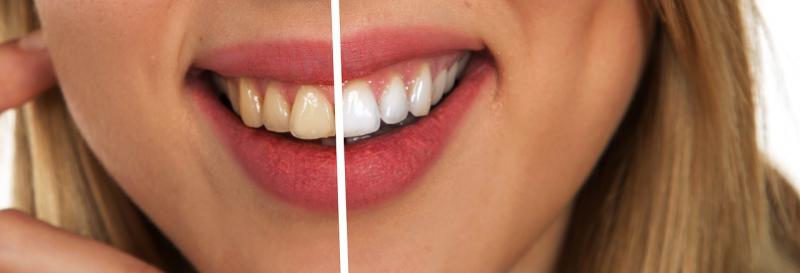How Teeth Whiteners Work

Image by Gerd Altmann from Pixabay
Teeth whitening has increasingly become more and more talked about between dental services, do-it-yourself kits, and at-home remedies. With all the varying results amongst individuals, it’s important to understand how teeth whiteners work and what to expect with them.
Types of Tooth Discoloration
There are two types of tooth discolorations (or stains) that have been categorized by dentists: extrinsic and intrinsic discoloration. Extrinsic stains are associated with the enamel on your teeth, which is the outer protective layer. Though there are varying depths to these types of stains, they’re generally easier to treat than intrinsic. Extrinsic stains typically form from pigmented particles from foods, drinks, and smoking. Coffee, tea, and red wine are known for leaving annoying extrinsic stains.
Intrinsic stains are formed on the inner layer of your teeth, known as the dentin. Dark spots or coloration deep in the tooth’s dentin causes the whole tooth to appear darker on the surface. These stains are commonly formed by injury to the tooth and excess fluoride exposure when the tooth is forming. It’s much harder to remove these stains, which is why they are more commonly covered than removed completely.
Teeth Whitening Ingredients
Most teeth whiteners use either one or a combination of two chemical agents called carbamide peroxide and hydrogen peroxide. There aren’t any major differences between the two peroxides, except that 10% carbamide is about the equivalent of 3% hydrogen peroxide.
The enamel on your teeth is porous, which is why it’s easier to treat extrinsic stains with whiteners. The two peroxides will work their way into the enamel and create an oxidizing chemical reaction that breaks the bonds of the stain particles. This method of bleaching will have different results depending on the level of stains on your teeth, the percentage of carbamide and/or hydrogen peroxide, and how much time the peroxide sits for.
Type of Treatments
All teeth whitening methods fall under one of three categories: professionally done, at-home products, and do-it-yourself remedies. The best and quickest results will occur if your teeth are whitened by a professional cosmetic dentist like durangodmd.com. No treatment is permanent, but the results will last much longer with this method. A professional teeth whitening can have results that last up to 3 years, of course, your eating and drinking habits will affect how long the treatment results actually last.
At-home products such as whitening toothpaste, strips, gels, and lights will all have varying degrees of results depending on how much peroxide is in them and how long they sit on your teeth for. If you opt to use at-home products of do-it-yourself remedies, be sure to follow the instructions carefully. It’s not wise to leave whitening product on your teeth for longer than the suggested time.
Sensitivity to Treatment
It’s not uncommon for teeth to be sensitive to whitening procedures—most teeth have a sensitivity to peroxide. This isn’t harmful to your teeth, but it does cause some discomfort. If your teeth are extra sensitive, then you may consider choosing a whitening method with low percentages of peroxide and only applying for short increments of time. Treatments containing carbamide peroxide as the sole bleaching agent would be a good alternative to hydrogen peroxide in cases of sensitivity.
The next time the newest teeth whitening method starts popping up in your social media adds or showing up on the shelves at the store, take a look at the peroxide content and application time. If it contains hydrogen or carbamide peroxide, then it will have whitening results. However, the length of time combined with peroxide levels will determine the strength of the method. Remember, everyone’s teeth are different and will yield different results depending on the discoloration levels in your dentin and enamel.
More to Read:
Previous Posts:





